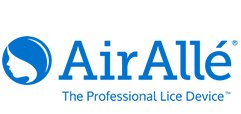The History of Our Amazing AirAllé
Lice Clinics of America has been wildly successful because of one thing that all the clinics within their network have in common: the AirAllé.The AirAllé is a revolutionary medical device that has changed the lice industry forever. We’re lucky to be the ones who offer the amazing AirAllé lice treatment and we want every parent to know about it.
Who Created The AirAllé?
The AirAllé was invented by an intelligent biology professor at the University of Utah named Dr. Dale Clayton. His research and experimentation led to an amazing product originally called the LouseBuster, now known as the AirAllé.
How?
Clayton first started studying lice by analyzing feather lice on birds. Before he came to Utah, Clayton lived in England and studied at Oxford University. The 80’s and early 90’s brought a stepping stone in Clayton’s success — he successfully cultured lice on captive birds. Clayton eventually moved his lab to the University of Utah in 1996 where he faced unusual difficulty keeping lice alive on captive birds. He asked his climates if they faced these same difficulties and learned that they did as well because of Utah’s extremely dry climate. He came up with the solution to install steam lines in insect culture rooms to increase the ambient humidity. Clayton installed lines in bird rooms and the problem was resolved. He was back to culturing feather lice on birds.
Research
Clayton’s children ironically contracted head lice at school while he was in the middle of his research and he noticed that they were resistant to drugstore lice shampoos. This was interesting to him. Clayton pondered on his research with pigeon lice, which led to the conclusion that it might be possible to control head lice by reducing the level of humidity near the scalp. He asked himself could do that with human head lice.
He dedicated the next several years to researching and experimenting this with trial and error. He tested countless concepts and was determined to come to a clear conclusion.
One of his experiments consisted of blow-dryers. He concluded that does not work to control head lice with a conventional blow dryer because it was dangerous and would cause burns on the head. It would have to be a blow-dryer that had a heat level that was tolerable to the scalp. He knew that a combination of heat and airflow would kill head lice.
His Conclusion
After many long months of more research, Clayton found that it is most-likely possible to kill lice and their eggs with a new, custom device similar to a blow-dryer but with the ability to combine fast-moving heated air, a precise angle of application and the right duration of treatment. He tested his LouseBuster prototypes and the rest is history.
His findings were published in the 2006 journal Pediatrics. This paper released the success of the LouseBuster device for killing head lice and their nits. The University of Utah also released a press release that gained attention worldwide, leading to an international interest in the device. Parents wanted to know more about it and there was a need for it.
Larada Sciences was formed in 2006 to take this innovative AirAllé technology to market. In 2014 Larada Sciences created the Lice Clinics of America brand and the rest is history.










